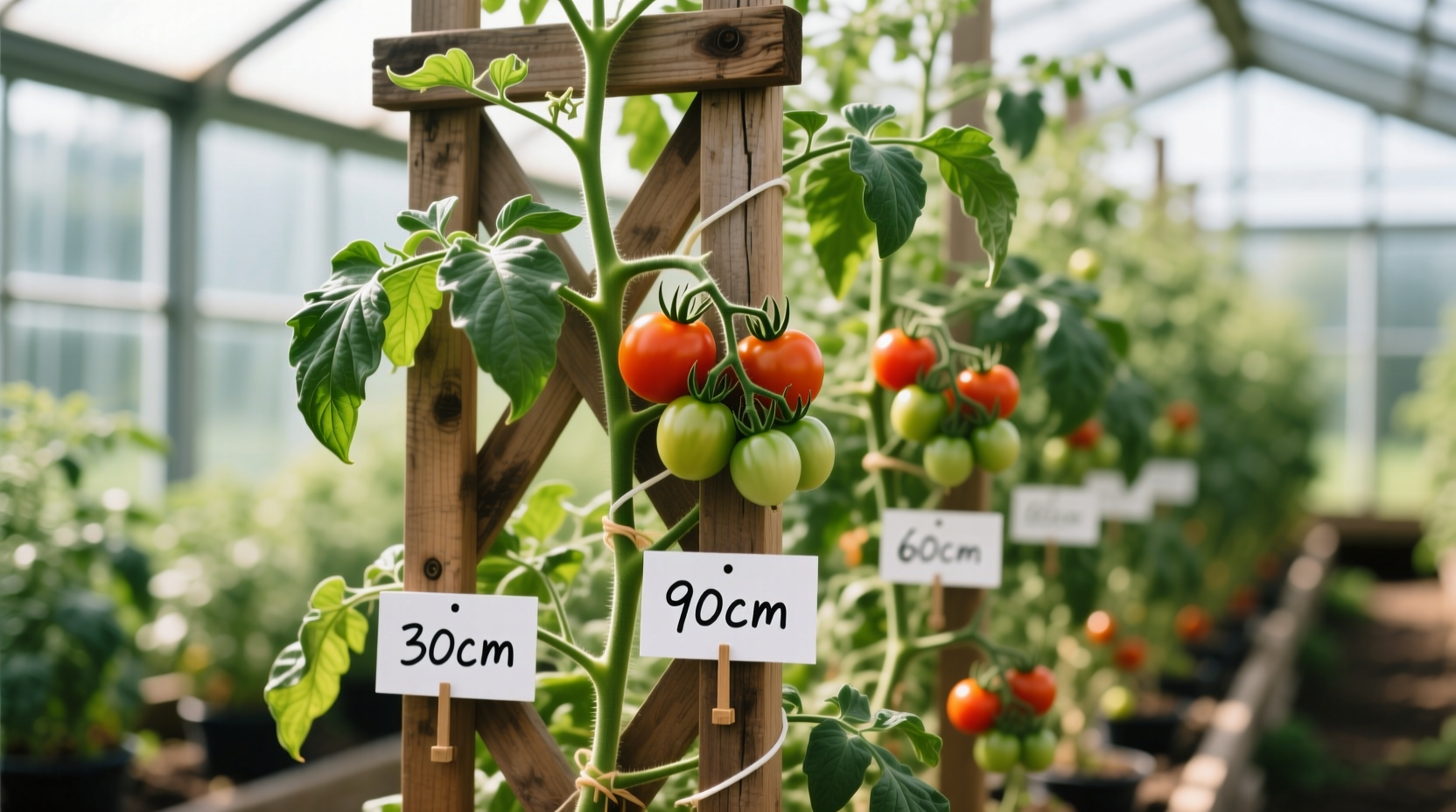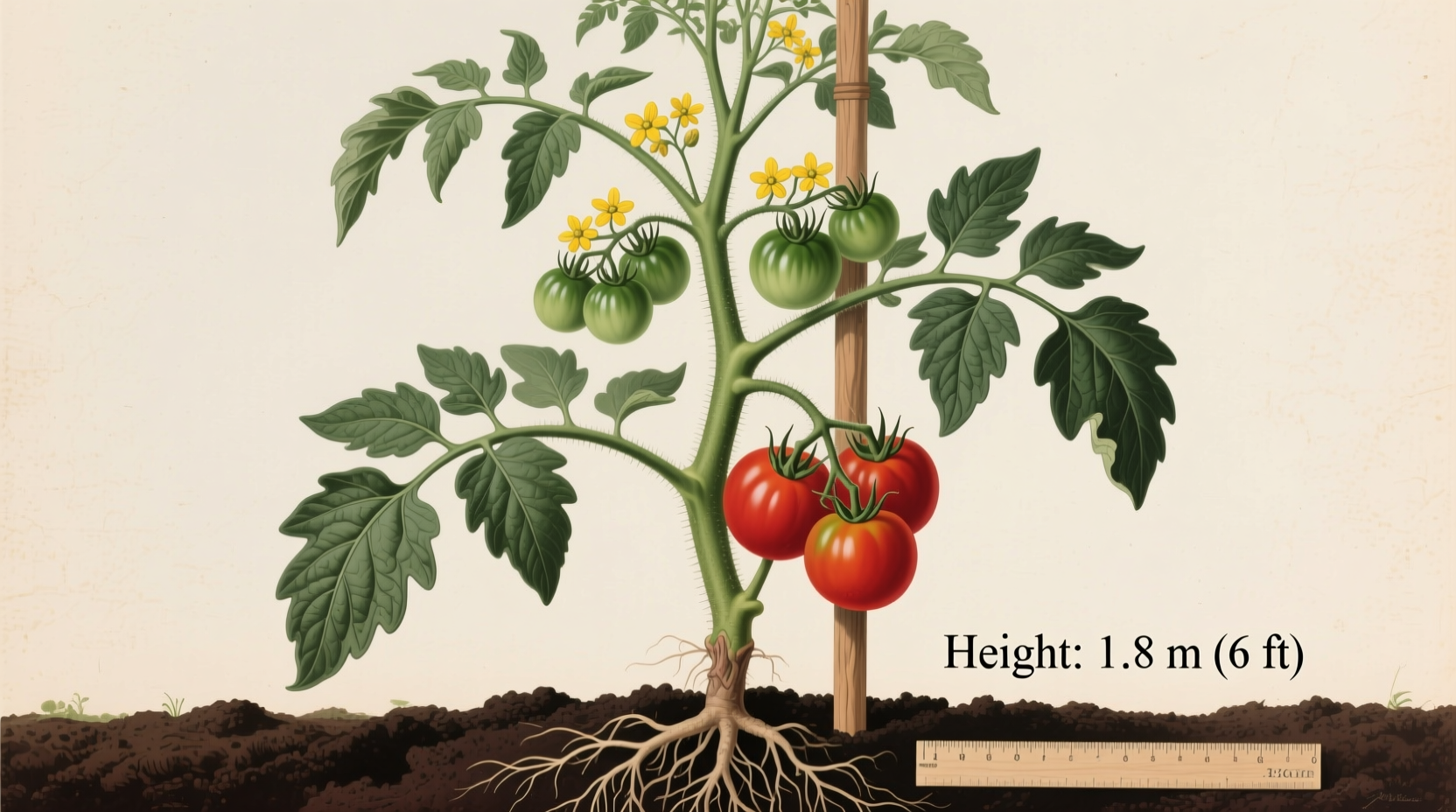Understanding tomato plant height is crucial for successful gardening. Whether you're planning your garden layout, selecting containers, or installing support systems, knowing exactly how tall your tomato plants will grow helps prevent common gardening mistakes that lead to poor yields or plant damage.
Why Tomato Plant Height Matters for Garden Success
Getting the height right affects everything from sunlight exposure to disease prevention. Plants that outgrow their supports become tangled and vulnerable to pests and soil-borne diseases. Conversely, plants that don't reach their potential height often produce fewer fruits. The key is matching your variety's growth pattern to your gardening space and support system.
Factors That Determine Tomato Plant Height
Several elements work together to determine how tall your tomato plants will grow:
Variety Type: The Primary Determinant
The most significant factor is whether your tomato is determinate or indeterminate:
| Type | Typical Height Range | Growth Pattern | Best For |
|---|---|---|---|
| Determinate (Bush) | 3-4 feet | Grows to fixed height, then stops | Containers, small spaces, canning |
| Indeterminate (Vining) | 6-12+ feet | Continues growing until frost | Garden beds, trellising, extended harvest |
| Semi-Determinate | 4-5 feet | Intermediate growth habit | Balanced production in limited spaces |
Environmental Conditions That Affect Growth
Even within variety types, these factors influence final height:
- Sunlight exposure: Plants need 6-8 hours of direct sun; insufficient light causes leggy, weak growth
- Soil quality: Rich, well-draining soil with proper nutrients supports optimal growth
- Water consistency: Irregular watering stresses plants and affects growth patterns
- Temperature range: Ideal growing temperatures are 70-85°F (21-29°C)
- Pruning practices: Strategic pruning directs energy to fruit production rather than excessive height
Common Tomato Varieties and Their Expected Heights
Specific varieties demonstrate how dramatically height can vary:
Determinate Varieties (Bush Types)
These compact plants reach their mature height and then stop growing, typically producing one main harvest:
- Roma: 3-4 feet - Ideal for containers and small gardens
- Celebrity: 4 feet - Popular for consistent production
- Mountain Merit: 3 feet - Disease-resistant variety for challenging conditions
Indeterminate Varieties (Vining Types)
These continue growing throughout the season, requiring substantial support:
- Beefsteak: 6-8 feet - Requires strong trellising for heavy fruit
- Cherokee Purple: 8-10 feet - Heirloom variety with exceptional flavor
- Sungold: 6-8 feet - Cherry tomato with vigorous growth habit
- Brandywine: 8-12 feet - Large heirloom fruits on tall vines

Practical Implications for Your Garden Layout
Understanding height requirements helps you avoid common planning mistakes:
Space Planning Considerations
Proper spacing prevents overcrowding and disease:
- Determinate varieties: Space 24-36 inches apart
- Indeterminate varieties: Allow 36-48 inches between plants
- Row spacing: Minimum 4 feet between rows for air circulation
Support System Requirements by Height
Selecting the right support prevents plant damage:
- 3-4 foot plants: Sturdy tomato cages (18-24 inch diameter)
- 6-8 foot plants: Sturdy stakes (7-8 feet tall) or string trellis systems
- 8+ foot plants: A-frame trellis or overhead support system
Managing Excessive Growth in Indeterminate Varieties
When your tomatoes outgrow expectations, these techniques help:
Strategic Pruning for Height Control
Proper pruning directs energy to fruit production:
- Remove suckers below first fruit cluster to strengthen main stem
- Top plants 30-45 days before first expected frost
- Limit to 2-4 main stems for better fruit size and quality
Growth Timeline and Height Expectations
Understanding the progression helps manage expectations:
- Weeks 1-4: Seedling stage - 6-12 inches tall
- Weeks 5-8: Establishment phase - 1-3 feet tall
- Weeks 9-16: Active growth phase - rapid vertical development
- Weeks 17-24: Fruit production phase - height stabilizes as energy focuses on fruit
Troubleshooting Height-Related Problems
Address these common issues before they affect your harvest:
When Plants Grow Too Tall Too Fast
Excessive height without fruiting indicates:
- Too much nitrogen fertilizer - switch to phosphorus-rich formula
- Inadequate sunlight - relocate to sunnier spot if possible
- Overwatering - allow soil to dry slightly between waterings
When Plants Don't Reach Expected Height
Stunted growth could mean:
- Root-bound container - transplant to larger space
- Nutrient deficiency - test soil and amend accordingly
- Disease pressure - inspect for signs of blight or wilt
Maximizing Yield Through Height Management
Proper height control leads to better harvests:
- Train vines horizontally when they reach support height
- Remove lower leaves touching soil to prevent disease
- Rotate plants weekly on trellis for even sun exposure
- Pinch off growing tips when plants reach desired height
FAQ: Common Questions About Tomato Plant Height
How tall do cherry tomato plants typically grow?
Most cherry tomato varieties are indeterminate and grow 6-8 feet tall. Popular varieties like Sungold and Sweet Million require substantial support. Some compact determinate cherry types like Patio Princess reach only 2-3 feet, making them ideal for containers.
Can I control how tall my tomato plants grow?
Yes, you can manage height through strategic pruning, container selection, and support systems. For determinate varieties, height is genetically fixed. For indeterminate types, you can limit height by pinching off the growing tip 30-45 days before first frost, which redirects energy to ripening existing fruit rather than new growth.
Why are my tomato plants growing taller but not producing fruit?
Excessive height without fruiting typically indicates too much nitrogen fertilizer, inadequate sunlight, or overwatering. Switch to a phosphorus-rich fertilizer, ensure plants receive 6-8 hours of direct sun, and allow soil to dry slightly between waterings. Pruning excess foliage can also redirect energy to fruit production.
How much space do tall tomato varieties need between plants?
Indeterminate tomato varieties that grow 6 feet or taller require 36-48 inches between plants with minimum 4-foot spacing between rows. This spacing ensures adequate air circulation to prevent disease and allows room for proper support systems. Container gardening for tall varieties needs pots of at least 15-20 gallons with corresponding support structures.
What's the tallest tomato plant variety commonly grown?
The Brandywine heirloom variety typically grows 8-12 feet tall under optimal conditions. Some indeterminate varieties like 'Russian Giant' and 'Giant Belgium' can reach similar heights. These extra-tall varieties require substantial support systems like A-frame trellises or overhead structures to manage their vigorous growth while maintaining fruit quality.











 浙公网安备
33010002000092号
浙公网安备
33010002000092号 浙B2-20120091-4
浙B2-20120091-4